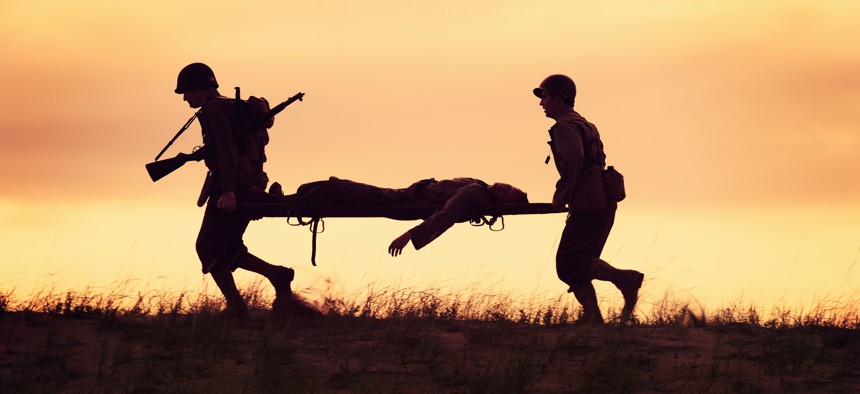US Army Announces New Machine Learning Tech For Burn Treatment

LifeJourneys/Getty Images
The Defense Department will partner with two private medical research centers to develop a portable tool for soldiers to assess burns.
The Defense Department announced a new partnership focused on using machine learning technology to allow anyone—even those without any medical background—to treat burn wounds on the battlefield.
In a sole source contract with the Beckman Laser Institute and Medical Clinic at the University of California, Irvine, the U.S. Army Institute of Surgical Research will conduct research in using machine learning algorithms to assess the severity of burn wounds in conjunction with a combination of imaging techniques, specifically Spatial Frequency Domain Imaging and Laser Speckle Imaging systems.
“There is a critical unmet need for far-forward triage and monitoring tools that enhance battlefield diagnostics for burn wounds by non-burn experts,” the contract announcement reads. “Whilst burns, particularly in their early stages, are dynamic and often evolving, they are influenced by secondary comorbidities.”
The specific technology requested by USAISR is intended to develop portable devices that can map a 3-D profile of burned skin surfaces and regions to determine burn severity “in the hands of non-expert personnel at the point of injury.”
The project divides its requirements between two years. Within the first year, the device should be able to perform a detailed analysis of the wound from image data collection, accurately measuring the spatial frequencies of biological components including edema, or trapped fluids; skin tissue molecular structure; oxygen saturation; and the total number of oxygen-carrying proteins called hemoglobin. These inputs will be used to construct a burn severity map of the wound.
By the second year, the device should comfortably run on machine learning algorithms to output burn depth and the total body surface area of a burn from imaging data. It should also report the accuracy of a burn’s depth on the body and account for when the burn composes over 20% of body surface area––a threshold that requires medical evacuation and triage.
The tool will be a no-contact, compact device, intended for quick and safe use.
Branches of DOD have looked at machine learning and artificial intelligence capabilities as a tool for burn wound management and assessment in the past. Nearly a decade ago, the Pentagon began soliciting contracts for biotechnology that can aid soldiers who suffer deep tissue burns.
NEXT STORY: Navy Launches SCOUT To Expand AI Capabilities






